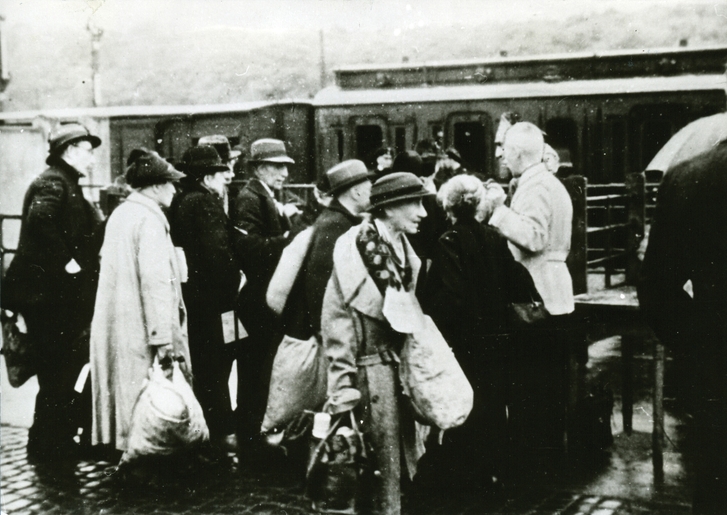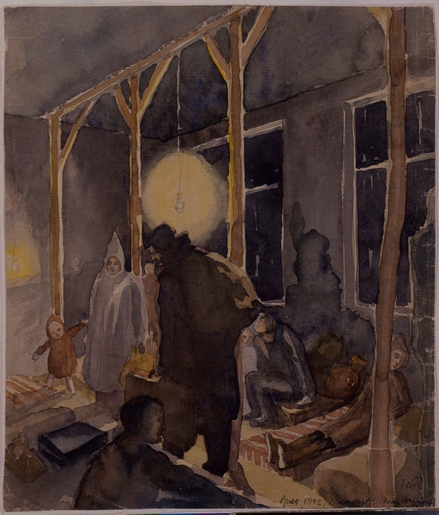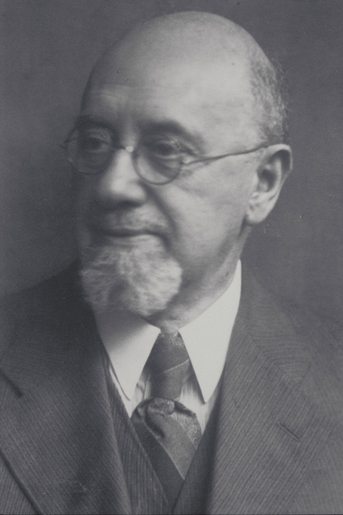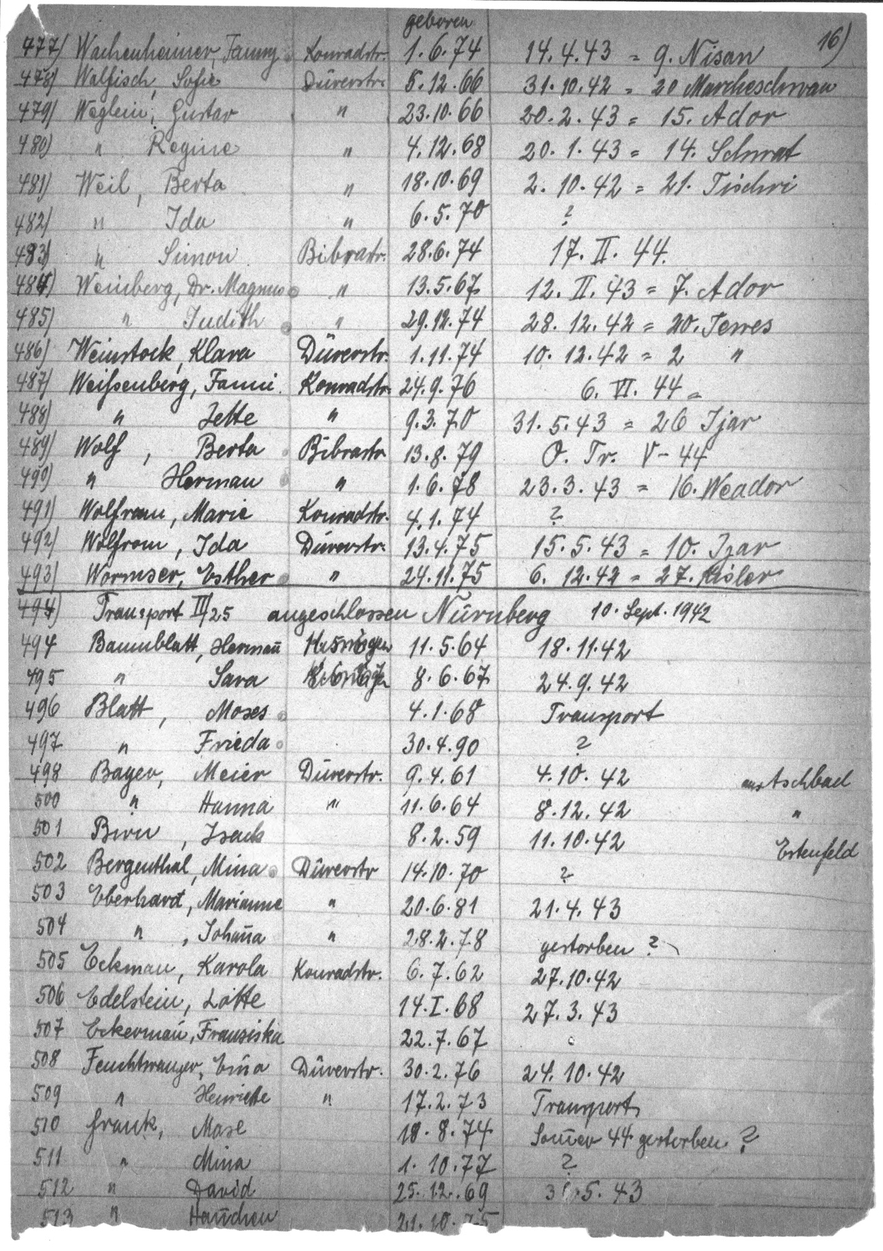UPROOTING AND DISPLACEMENT



Deportations of Jews to concentration and death camps followed years of social and political exclusion, seizure of property, pogroms and arrests, and forced separation of families. The first transport of Czech Jews arrived in Theresienstadt in November 1941. German and Austrian Jews followed in June 1942.
Some Jews may have heard about Theresienstadt before their own deportations, since inmates had been allowed to receive parcels from outside. However, until the last moment, deportees never knew the destination of their deportation orders for certain. At the station, some received a “T” symbol for Theresienstadt, others received an “O” for Ost (East)— meaning in most cases death. The size of transports to Theresienstadt could differ significantly. While trains from large Jewish centers like Vienna, Munich, or Berlin carried 1,000 prisoners in 1942, trains from other places, like Danzig (now Gdansk, Poland), Darmstadt, or Hamburg, sometimes transported only 10-20 people in later years. Transport was a painful and traumatic experience. The train journey, often in horrendous conditions, could last several days and worsen the physical and emotional condition of people who already had experienced persecution for years.

“The next stop is Theresienstadt, our destination. All leave the wagon. Only the dead remain lying; they will be removed by the squad later and here next to the rails piled up.”
—Anna Löwenstein’s diary, LBIJER 462.
Anna worked as a nurse for 26 years. In July 1942, she was sent with her husband to Theresienstadt. They both perished in the camp around 1943.